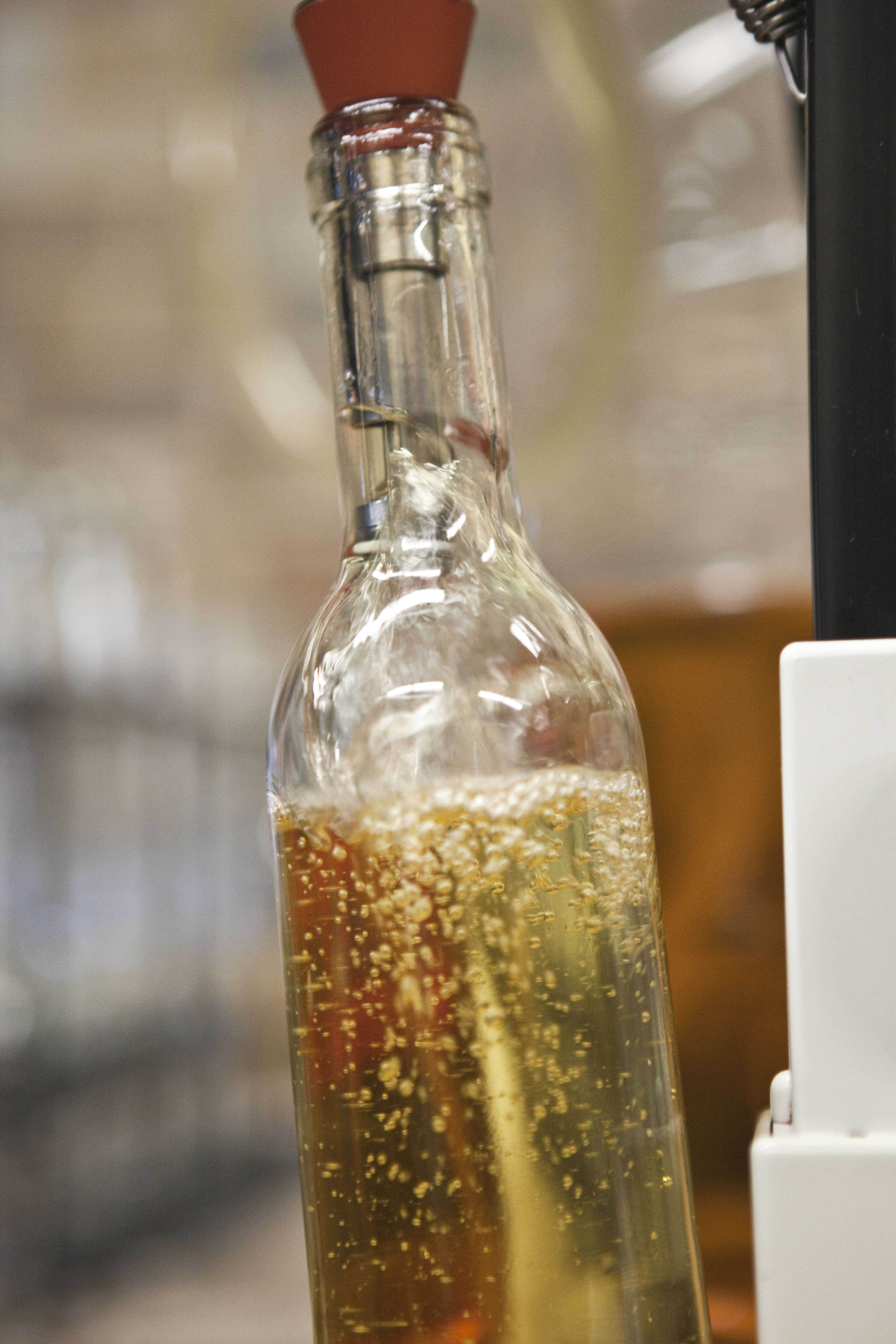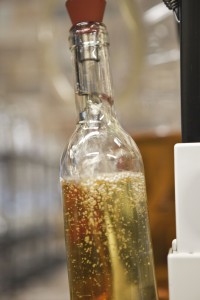Wine in Waterloo


There is a lot to take into consideration when moseying through your local liquor store hours before an evening of drinks. Passing the shelves of vodka and gin you mentally scan your fridge at home for a tasty mix only to realize that grocery shopping did not make it into your priorities this week.
You move on, allowing only a moment’s pause at the tequila selection where the abasement of last weekend’s exaggerated dance and involuntary confession has you sauntering forward. Beer? Too filling. Coolers? Too sweet.
And then you stop, your stride interrupted by a barricade of red and white composing the overwhelming wine selection. Bingo. But where to start?
There is such a wide range of taste when it comes to wine due to the multiple steps that go into its production. “It’s not only grape variety,” said James Fields, owner of Vintners Cellar Waterloo.
The manner in which wine is made plays an important role, as well as the conditions under which the juice from which it is made from was cultivated.
“There are thousands of different variances on wine making, not only in the kinds of oak you select, but also when you harvest the grapes and what kind of soil the grapes are grown in,” said Fields. “So the way that it is prepared and made as well as the quality of the ingredients comes into it.”
Fields began making and experimenting with wine back when he was a student before going on to establish his own public wine making business in 2008.
“Most people start off with sweet white wines, then they move into dry white wines, then they move into light bodied reds and eventually end up with heavy bodied reds,” he illustrated. The dryness of a wine is a measure of its sweetness, dry being less so. The body of a wine is a term used to define the strength of its flavour.
This isn’t necessarily the standard, however.
“There are some people that get to one stage and they just stop and that’s what they like,” said Fields. “One of the biggest pieces of advice I can say in selecting a wine is to drink what you like and don’t let anyone tell you otherwise.”
Although there are many options in this regard, there is one consistency that can help narrow down your preference and that is the difference in taste between red and white wines. However, there is actually no difference in the source from which they are both derived.
“It is the same grape,” said Fields. “The difference is red wine comes from leaving the skins in. So with white wine, the grapes are pressed and the grape skins are removed.” With red wine, the skins are left on the grape, which colours and strengthens the flavour of the juice.
This occurs during the beginning processes of a wine’s formation, which are just as imperative as its actual transformation from a juice to an alcohol.
“Winemaking is only half of what is really important, the other half is the vinicultural side which is the vineyard maintenance and the growing of the grapes,” emphasized Fields. “That is just as important as the wine making because if you don’t have high quality grapes to make wine from, you’re not going to end up with a high quality wine.”
In Canada there are particular regions where vineyards are most plentiful. “Prince Edward County and Niagara are the two main areas; there are also a fair amount in British Columbia” said Fields.
But there is an establishment closer to home where customers can experience the actual making of wine, on a much smaller scale than the places that produce what can be found in stores, and that is Fields’ own Vinter’s Cellar Waterloo where The Cord was able to receive a thorough demonstration of how it’s done.
The first step is to add the necessary ingredients to the vineyard’s grape juice in order to begin the process of its conversion into wine. The first is bentonite, a clay that expands to three times its volume when placed in contact with water.
“Now, the reason we add this it that it helps clarify the wine,” explained Fields. “Every time we do a step we give it a good stir. The clay gets mixed up and then it brings down all the particulate matter to the bottom so when we have to filter, there’s less stuff floating around.”
The second ingredient is a portion of oak wood chips placed in a cheese cloth bag. “Wine is usually aged in oak barrels which imbues it with flavour” said Fields.
“A lot of the wineries down in Niagara still use barrels, but barrels are very expensive and they’re usually only good for a year or two of use,” he continued. “So what a lot of the wineries are moving to are large stainless steel tanks and then they’re adding the oak chips because it’s a lot less expensive.”
The last and most essential ingredient is yeast. “The yeast is a specialized yeast for wine making called champagne yeast,” said Fields. “It’ll give you anywhere from 12 to 14 per cent alcohol content depending how much sugar is in the juice to start off.”
These contents are all put together and stored in a bucket before being moved into a glass carboy (a large, jug-like container) after a week’s time. “The reason we do that is we want a larger surface area.
The first week or so is when 80 per cent of the sugar is converted into alcohol and C02 and it’s a very vigorous reaction,” explained Fields. “If we put it into one of the carboys we’d have a volcano on our hands.”
The contents then remain in the carboy for another 3 weeks, resulting in a total of 4 weeks fermentation time where the yeast eats away at the sugar creating C02 as a bi product.
“After that we siphon it into another carboy and we add potassium sorbate and sodium metabisulfite and what those do is they kill off the yeast and stabilize the wine” said Fields.
“It’s important to kill off the yeast because say you wanted to sweeten your wine and then you bottle it. Well, if the yeast is still alive… it’s going to start eating the sugar, creating alcohol. But it’s also going to create C02 so now your bottles are going to explode or your corks are going to pop out.”
There is also a need to get the C02 out at this stage. “The C02 not only bubbles out but it also dissolves in the wine. Part of the natural aging process is that the C02 comes out,” explained Fields.
However, when making wine on a small scale and in a business setting where the wine is bottled young, the process must be sped up using a wine agitating rod. Then, all that’s left is to filter the wine and the process is complete.
The resulting product can be used in a variety of ways, as is its nature. It can be used as an ingredient in cooking, even as a cleaning solution and of course, to add a hazy glow to any evening. So don’t be intimidated by the options of wine, and start exploring them.
Fields Debunks Common Wine Myths
Red wine isn’t always served at room temperature. “There are red wines that are supposed to be served chilled. Most white wines are chilled but again, each wine supposedly has its perfect temperature to be served at.”
Wine doesn’t necessarily have to be made from grapes. “You can make wine from pretty much anything that had sugar in it… you could make broccoli wine if you really wanted to.”
Red wine does not have a higher alcohol content. “It is more strongly flavoured and that’s because of the tannins from the grape skins.”
Champagne and sparkling wine are essentially the same product. “Champagne is a region in France but usually [champagne is] made from the chardonnay grape. The reason sparkling wine came about is because champagne is trademarked, so if sparkling wine is not made in the champagne region they can’t call it champagne.”


